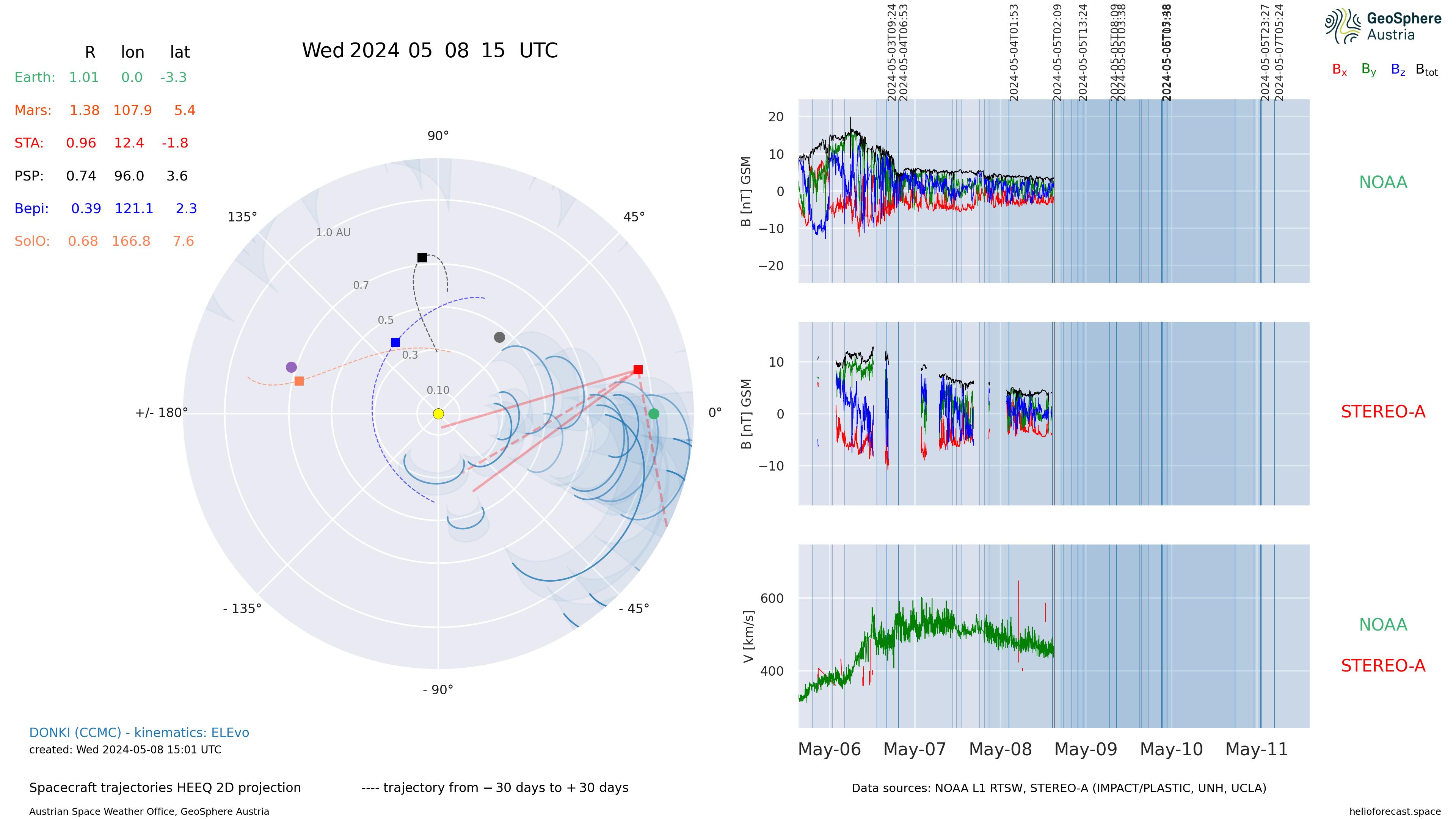Coronal mass ejection arrival time forecast with ELEvo
Current SOHO LASCO C3 movie CCOR last 7 days CCMC scoreboard ELEvo predicted arrivals at L1 at STEREO-A at Solar Orbiter Click on the figure above to see a movie including L1 and STEREO-A in situ data for the last few days (30 MB, 4k resolution, mp4). We acknowledge the Community Coordinated Modeling Center (CCMC) at Goddard Space Flight Center for the use of DONKI.
The Ellipse Evolution (ELEvo) model is a method to predict the arrival times of coronal mass ejections (CME) at Earth and other planets and spacecraft. It can be initiated with the initial speed and direction of a CME as measured in the SOHO or STEREO coronagraph data (ELEvo, Möstl+ 2015), or use data from the STEREO-A heliospheric imager instrument (ELEvoHI, Amerstorfer+ 2021, Bauer+ 2021). The model assumes an elliptical front shape of the CME leading edge, which is then observed in situ by spacecraft as the arrival of a shock wave or a density enhancement, followed often by a magnetic obstacle. Here, we present a work-in-progress ELEvo version using the initial CME parameters as given in the DONKI database. The model is updated every full hour. This page is refreshed automatically every 5 minutes. The ensemble is created by randomly varying the input parameters for the drag parameter, the initial speed of the CME (from the DONKI database), and the ambient solar wind speed along a normal distribution. We chose the size of our ensemble to be 50k. Our initial guesses are as follows (mean value and corresponding standard deviation): drag parameter: (0.1e-7 ± 0.025e-7 ) km-1, ambient solar wind speed: (400 ± 50) km s-1, measured CME initial speed: ± 50 km s-1. The predicted arrival time is the mean of all ensembles, and the error indicates the 2-sigma uncertainty. See also Čalogović+ 2021 for this type of methodology.
